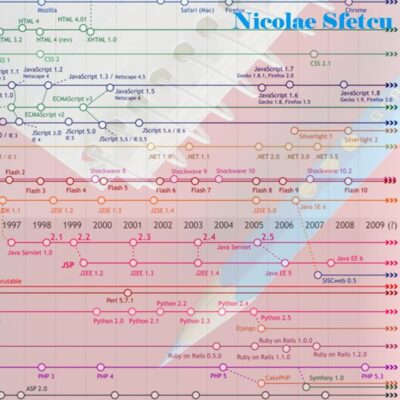 A guide for translators, about the translation theory, the translation process, interpreting, subtitling, internationalization and localization and computer-assisted translation. A special section is dedicated to the translator’s education and associations.
A guide for translators, about the translation theory, the translation process, interpreting, subtitling, internationalization and localization and computer-assisted translation. A special section is dedicated to the translator’s education and associations.
The guide include, as annexes, several independent adaptations of the corresponding European Commission works, freely available via the EU Bookshop as PDF and via telework.ro as EPUB, MOBI (Kindle) and PDF.
For a “smart”, sensible translation , you should forget not the knowledge acquired at school or university, but the corrective standards. Some people want a translation with the touch of the source version, while another people feel that in a successful version we should not be able to guess the original language. We have to realize that both people have right and wrong, and that their only fault is to present requirement as an absolute truth.
Teachers agree at least on this principle: “If a sentence is ambiguous, the translation must also be“.
There is another critical, less easy to argue, based on an Italian phrase with particularly strong wording: “Traduttore, traditore“. This critique argues that any translation will betray the author‘s language, spirit, style … because of the choices on all sides. What to sacrifice, clarity or brevity, if the formula in the text is brief and effective, but impossible to translate into so few words with the exact meaning? One could understand this criticism that it encourages us to read “in the text.” It seems obvious that it is impossible to follow this advice into practice.
CONTENTS:
Translation
– Assessment of the amount of translated texts
– Translation and interpretation
– – Translation documents
– Translation theories
– – Practical / communicative approach
– – Approaches of literary theories
– – Sociolinguistic mainstream
– – Approaches based on linguistic theories
– – Approaches based on philosophical and hermeneutic concepts
– – Semiotic approaches
– The translation process
– Types of translations
– – Technical translation
– Schools of thought
– Difficulties associated with specialized domains
– The problem of double translation
– Thoughts about translation
– European standard for translation services
– Beautiful infidels
– Self-translation
– – Types of self-translation
– – Factors that promote self-translation
– – Self-translation and not authorial translation
– Technical translation
– – Terminology
– – Translation process
– – Translation tools
– – The technical translator
– – – Status
– – – Remuneration
– Conference interpreting
– – Methods of interpretation
– – Skills of the interpreter
– – Contexts and working languages
– – The interpretation in international institutions
– – – UNESCO
– – – European Union
Internationalization and localization
– Example
– Internationalization and localization
– Challenges
– Software localization
– – Difficulties
– – Composing specifications
– – Special tools
Computer-assisted translation
– Translation memory
– – Advantages and disadvantages
– – General operation
– – Various
– – Software
– Machine translation
– – Translation process
– – Prerequisites
– – Difficulties
– – Approaches
– – Development
– – Existing products and services
– – Prospective
– Parallel text
Subtitle
– Subtitling or dubbing?
– Description
– Subtitling the movies
– – Spotting
– – Translation
– – Simulation
– – Engraving, inlaying or packaging
– – The live broadcast
– Live captioning
– – Velotype
– – Touch typing
– – Computer-aided stenotype
– – Speech recognition
– Surtitles
– – Comments
– – Technical means
– – Artistic issues
– Quasi instant voice translation
– – Difficulties
– – Ongoing projects
– – Future
Translation Studies
– Theories of translation – Interpretive theory
– Back-translation
– – The proper use of back-translation
– False friends
– – Cognates
– – – Complete false friends
– – – Partial false friends
– – False cognates
– Translation process
– – The implications of the “inside” language
– – Total and not absolute translation
– – A single model
– Untranslatability
– – Hovering
– – Translation methods
– – – Adaptation
– – – Calque
– – – Compensation
– – – Borrowing
– – – Periphrasis
– – – Translator’s note
– – Untranslatability of poetry and puns
– – An amazing counterexample
Translators
– Translator’s notes
– European Master’s in Translation
– – European Master’s in Translation
– – – Organization of EMT
– – – Core skills
– – The EMT label
– – EMT Network
– – – Eligibility
– – Members
– European Council of Literary Translators’ Associations
– – History
– – Objectives
– International Translation Day
Annexes: Translation in EU
– Translation Guide
– – Think before you write
– – – Who will be reading the document?
– – – What are you trying to achieve?
– – – What points must the document cover?
– – Focus on the reader
– – – Be direct and interesting
– – Get your document into shape
– – – When you start
– – – As you write
– – – Two common problems at the European Commission:
– – KISS – Keep It Short and Simple
– – – Short…
– – – … and Simple:
– – – Simple, uncluttered style also means:
– – Make sense – structure your sentences
– – Cut out excess nouns – verb forms are livelier
– – Be concrete, not abstract
– – Prefer active verbs to passive
– – – Name the agent
– – Beware of false friends, jargon and abbreviations
– – – Avoid false friends
– – – Avoid or explain jargon
– – – Take care with abbreviations
– – Revise and cheque check
– Clear English Tips
– – English prefers to be simple, concise and concrete.
– – – Use simple words where appropriate.
– – – Prefer a verb to an abstract noun
– – – Prefer a gerund to an abstract noun
– – – Prefer participles to relative clauses
– – – And eliminate participles entirely if appropriate.
– – – Use the passive voice sparingly
– – – Consider replacing negatives with positives
– – – Consider short forms and pronouns to avoid repeating full names …
– – – Express conditions, including hidden ones, with ‘if’ …
– – – In general, cut out extra verbiage.
– – English prefers straightforward syntax
– – – Keep the subject close to the beginning of the sentence
– – – Avoid splitting up subjects, modals, verbs and direct objects
– – – If a sentence is too long, pull information out into separate sentences.
– – – Use topic-introducing phrases sparingly.
– – English may use different number, articles, gender or words from other languages
– – – Keep uncountable nouns in the singular.
– – – Use ‘a’ rather than ‘the’ for members of a class.
– – – Do not use gender pronouns for entities.
– – – Consider alternatives to ‘of’.
– – – Finally, avoid ‘false friends’ in translation.
– English Style Guide
– – Introduction
– – Writing English
– – – GENERAL
– – – SPELLING
– – – PUNCTUATION
– – – NUMBERS
– – – ABBREVIATIONS AND SYMBOLS
– – – Acronyms and initialisms
– – – Contractions and truncations
– – – FOREIGN IMPORTS
– – – PARTS OF SPEECH
– – – LISTS
– – – SCIENCE GUIDE
– – – FOOTNOTES, CITATIONS AND REFERENCES
– – – CORRESPONDENCE
– – – PERSONAL NAMES AND TITLES
– – – NAMES OF BODIES
– – – GENDER-NEUTRAL LANGUAGE
– – About the European Union
– – – THE EUROPEAN UNION
– – – PRIMARY LEGISLATION
– – – SECONDARY LEGISLATION
– – – THE EU INSTITUTIONS
– – – REFERENCES TO OFFICIAL PUBLICATIONS
– – – EU FINANCES
– – – MEMBER STATES
– – – OFFICIAL LANGUAGES AND CURRENCIES
– – – EXTERNAL RELATIONS
– – TRANSLITERATION
– – – TRANSLITERATION TABLE FOR GREEK
– – – TRANSLITERATION TABLE FOR CYRILLIC
– – FORMS OF ADDRESS
– – – Envelop
– – – Start
– – – Close
– – – Envelop
– – – Start
– – – Close
– – – Envelop
– – – Start
– – – Close
– – – Envelop
– – – Start
– – – Close
– – – Envelop
– – – Start
– – – Close
– – – Envelop
– – – Start
– – – Close
– – – Envelop
– – – Start
– – – Close
– – – Envelop
– – – Start
– – – Close
– – – Envelop
– – – Start
– – – Close
– – – Envelop
– – – Start
– – – Close
– – – Envelop
– – – Start
– – – Close
– – – Envelop
– – – Start
– – – Close
– Style Guide for EU Member States
– – Austria
– – – Geography
– – – Judicial bodies
– – – Legal instruments
– – – Government bodies and administrative divisions
– – Belgium
– – – Geography
– – – Judicial bodies
– – – Legal instruments
– – – Federal structure
– – Bulgaria
– – – Geography
– – – Judicial bodies
– – – Legal instruments
– – Croatia
– – – Geography
– – – Regions
– – – Judicial bodies
– – – Political and administrative structure
– – – Legal instruments
– – – Law gazettes, official gazettes and official journals
– – – Miscellaneous
– – Cyprus
– – – Geography
– – – Judicial bodies
– – – Legal instruments
– – Czech Republic
– – – Geography
– – – Judicial bodies
– – – Legal instruments
– – Denmark
– – – Geography
– – – Judicial bodies
– – – Legal instruments
– – Estonia
– – – Geography
– – – Judicial bodies
– – – Legal instruments
– – – Law gazettes, official gazettes and official journals
– – Finland
– – – Geography
– – – Judicial bodies
– – – Legal instruments
– – – Law gazettes, official gazettes and official journals
– – France
– – – Geography
– – – Judicial bodies
– – – Legal instruments
– – Germany
– – – Geography
– – – Judicial bodies
– – – Legal instruments
– – – Government bodies and administrative divisions
– – Greece
– – – Geography
– – – Judicial bodies
– – – Legal instruments
– – Hungary
– – – Geography
– – – Judicial bodies
– – – Legal instruments
– – Iceland
– – – Judicial bodies
– – Ireland
– – Italy
– – – Geography
– – – Judicial bodies
– – – Legal instruments
– – Latvia
– – – Geography
– – – Judicial bodies
– – – Legal instruments
– – Lithuania
– – – Geography
– – – Judicial bodies
– – – Legal instruments
– – – Law gazettes, official gazettes and official journals
– – Luxembourg
– – – Geography
– – – Judicial bodies
– – – Legal instruments
– – Malta
– – – Geography
– – – Judicial bodies
– – – Legal instruments
– – Netherlands
– – – Geography
– – – Judicial bodies
– – – Legal instruments
– – Poland
– – – Geography
– – – Judicial bodies
– – – Legal instruments
– – – Law gazettes, official gazettes and official journals
– – Portugal
– – – Geography
– – – Judicial bodies
– – – Legal instruments
– – Romania
– – – Geography
– – – Judicial bodies
– – – Legal instruments
– – Slovakia
– – – Geography
– – – Judicial bodies
– – – Legal instruments
– – Spain
– – – Geography
– – – Judicial bodies
– – – Legal instruments
– – Sweden
– – – Geography
– – – Judicial bodies
– – – Legal instruments
– – Turkey
– – – Judicial bodies
– – – Legal instruments
– – United Kingdom
– – – Geography
Quotes
References
About the author
– Nicolae Sfetcu
MultiMedia Publishing House Edition: https://www.telework.ro/en/e-books/how-to-translate-english-translation-guide-in-european-union/ , https://www.cartilibrarie.com/carte/how-to-translate-english-translation-guide-in-european-union/
– e-Book: EPUB (ISBN 978-606-033-029-5), Kindle (ISBN 978-606-033-031-8), PDF (ISBN 978-606-033-030-1)
Print: https://www.lulu.com/shop/nicolae-sfetcu/how-to-translate/paperback/product-1g8j4nzw.html
DOI: 10.58679/MM91853
Publication Date: April 20, 2015
PREVIEW: https://www.telework.ro/wp-content/uploads/2015/04/How_to_Translate-Nicolae_Sfetcu-CC-Preview.pdf
Smashwords (EPUB): https://www.smashwords.com/books/view/536810
Google (EPUB, PDF): https://books.google.ro/books?id=EUiBrgEACAAJ
eMag (PDF, EPUB, Kindle) https://www.emag.ro/cum-sa-traduci-ghid-de-traducere-in-engleza-in-uniunea-europeana-nicolae-sfetcu-pdf-pben044p/pd/D4D2H4BBM/
Facebook: https://www.facebook.com/TranslationGuide/
YouTube: https://www.youtube.com/watch?v=kJMoMioQzhc












Reviews
There are no reviews yet.